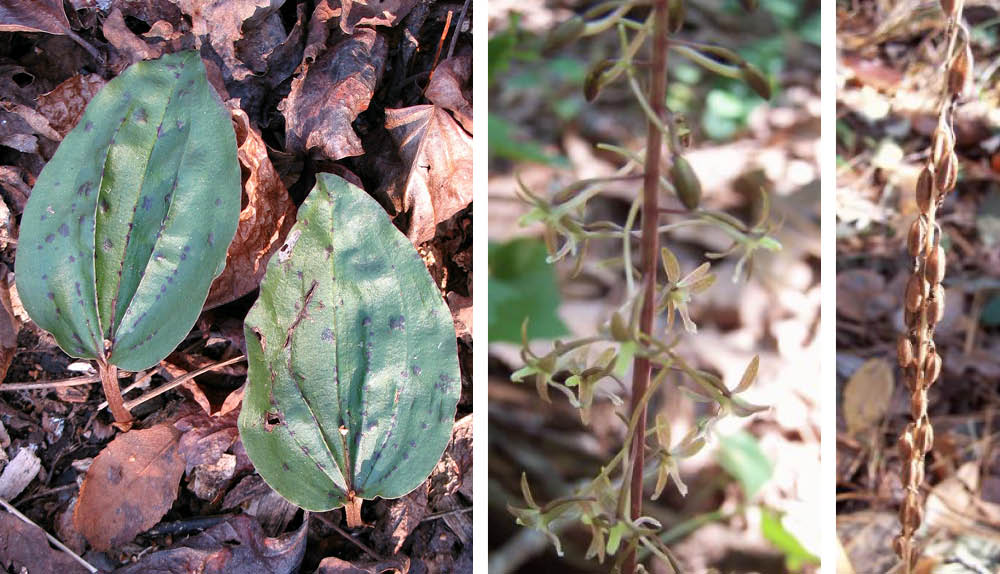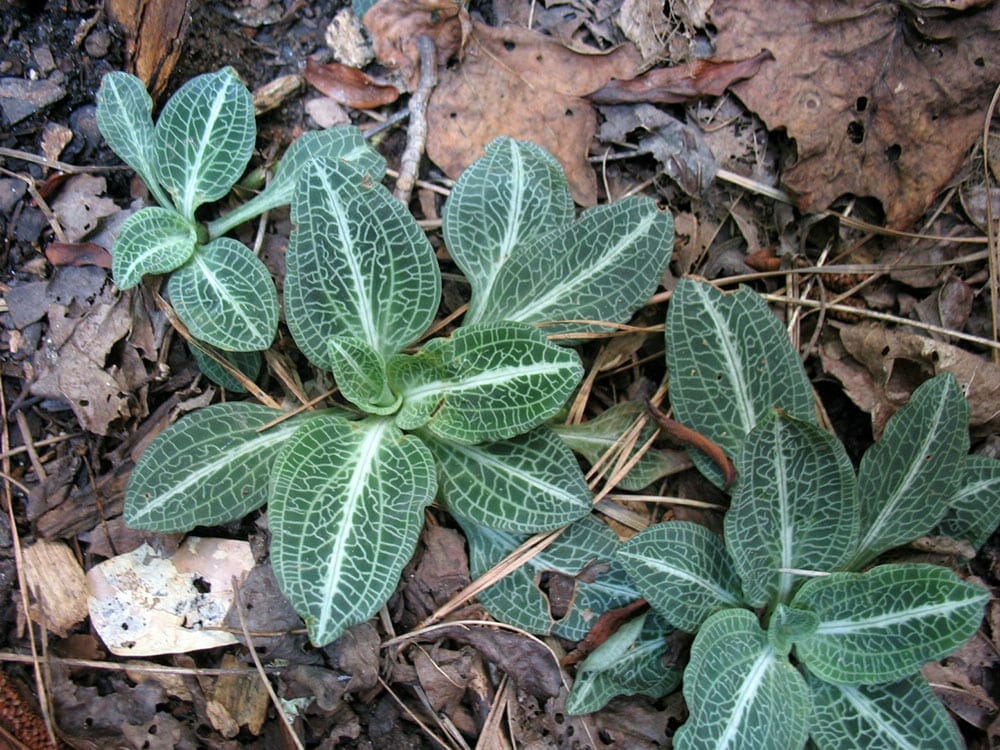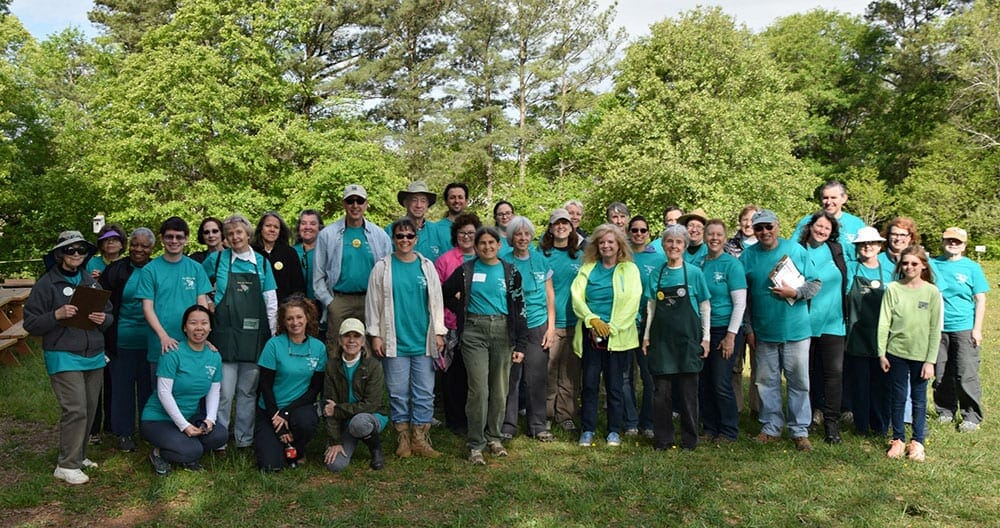Sign Up for the 2019 GNPS Symposium
Jacqueline McRae
More than 150 years of collective experience will be shared by our speakers at the 2019 Native Plant Symposium Caring for our Living Landscapes to take place on March 2nd in Macon. We invite you to come on up, down and across our state to this central location and fabulous venue and be fired up in 2019 about native plants.

Spend the day with 200+ likeminded people and learn as our speakers focus on a message of caring throughout the day. A focus on care, because unlike maintenance, care implies a genuinely engaged relationship with the world around us.
How we layer Georgia native plants into home gardens, improve the soil in which they grow and actually manage to do this for ourselves in our own home gardens will become more and more clear over the course of the day. Why we must layer in native plants will be reinforced by our two keynote speakers Rick Darke and Doug Tallamy, co-authors of The Living Landscape. Both Rick and Doug will be signing their books during the morning and lunch break. Books will be available for purchase at the symposium from the GNPS Market.

Symposium speakers include Rick Darke, Doug Tallamy, Jennifer Ceska, Kevin Burke, and Andrea Greco.
Jennifer Ceska is passionate about connecting people and plants, and she works daily to create project-driven professional networks across Georgia, with sister states and even nationally. Later in the day, Kevin Burke will take us on a journey below the ground and show us more sustainable ways of maintaining and caring for our soils. To bring us all home, Andrea Greco, GNPS member, landscape architect and experienced plant rescue facilitator, will share some of the basic tools needed for us to get started ourselves.
This year GNPS is celebrating 25 years since its foundation back in 1994 and some of our founding members will be attending the symposium now in its 24th year. The GNPS Native Plant Symposium ensures that, as a Society, we continually promote the stewardship and conservation of Georgia's native plants and their habitats through education and with the involvement of individuals and organizations. Register and read more online here: www.gnps.org/symposium
Chapter News: Redbud
Margaret Rasmussen
Heritage of the Hemlocks

Restoration of Harry and Lorene Martin Re-Creation Refuge at Linwood Nature Preserve continues with transplanting of Eastern Hemlock (Tsuga canadensis).
To construct a trailhead for Linwood Nature Preserve, the City of Gainesville purchased a family home site that had been lovingly landscaped over several decades by the mother who wanted nothing more than a tree, shrub or flower for her birthday, Christmas or any occasion. To see their mother's lush landscape of hemlocks, white pines, dogwoods and native azaleas fall in the path of a bulldozer broke the hearts of a son and daughter, who had grown up side by side with those plants. Redbud Project set about to restoring their mother's heritage landscape by developing the Lorene and Harry Martin Re-Creation Refuge to allow people of all ages and physical ability to enjoy health and wellness in nature.
As fate would have it, Redbud Chapter learned of a site in Sautee Nacoochee, White County, where the Crittenden family landscape and woodlands were beyond control. The son who had inherited his mother's property sent out the word for help to manage it. He welcomed Redbud native plant rescuers with open arms, delighted that his late mother's love of plants would be appreciated and enjoyed by others, especially in public landscapes. The grove of hemlocks that she had planted in the woodlands to surround the family cemetery flourished to weed proportions. Her son had treated the mother trees so we detected no wooly adelgid in the saplings, just what we needed to restore the hemlock perimeter of Lorene Martin's landscape refuge.
Only after digging hemlocks and hauling them to Linwood Nature Preserve did we learn that the two plant-loving women were both descendants of pioneers who had settled in Sautee over 200 years ago on adjacent land claims — both homesteads still stand.
Fall Celebration Recognizes Stewards of the Earth

Left: William Bartram (a.k.a. Glen Kyle, Director, Northeast Georgia History Center) shared the trials and triumphs of his plant collecting travels through late 18th Century Georgia with guests at dedication of the Native Plant Conservatory. Right: The benefactors of the facility, Robert and Wanda Swoszowski.
With a festive fall celebration at Linwood Nature Preserve, Redbud Project chapter dedicated the Robert and Wanda Swoszowski Native Plant Conservatory for their benevolence that has sustained the Redbud Project at a critical period of development. As true stewards of the Earth, the Swoszowskis are dedicated to education and encourage programs and events for the public to enjoy nature in the heart of our community. They have helped to spread awareness of the economic, esthetic and environmental value of native plants in Gainesville, Hall County, a region undergoing rapid economic development.
During the celebration, naturalist William Bartram (a.k.a Northeast Georgia History Director Glenn Kyle) escorted guests on his 18th century “Travels Through Georgia Forests,” treating them to his explorations and adventures — sharing his fare of apple cider and deer jerky. Many of his botanical discoveries, like the Franklin tree (Franklinia altamaha) that he sent to King George in England in 1765, are featured in the conservatory plant beds, which are designed with understory trees, shrubs and perennial herbs to demonstrate best landscape practice for native plant beauty through all seasons.

Restoration of Harry and Lorene Martin Re-Creation Refuge at Linwood Nature Preserve continues with transplanting of Eastern Hemlock (Tsuga canadensis).
Nestled on the shore of Lake Lanier in the heart of Gainesville, the 30-acre urban forest harbors pristine oak-hickory-pine forest, wetlands and prairie ecosystems that flourish with communities of indigeneous trees, shrubs and wildflowers. At Linwood Nature Preserve of Gainesville Parks and Recreation, leisure recreation and education in nature are accessible to the public. Dedication of the Robert and Wanda Swoszowski Native Plant Conservatory launched the Redbud Nature Education Fund to further awareness that native plants are the essential tool to balance our imperiled, natural ecosystems.
Plant Spotlight: Evergreen Orchids
Ellen Honeycutt

Cranefly orchid (Tipularia discolor), including the leaves of two adjacent plants, the late-summer flower stalk, and seed capsules.
Did you know we have native orchids? Ladyslippers (Cypripedium), lady's tresses (Spiranthes), and fringed orchids (Platanthera) are some of the very special ones but not very common. Two of our native orchids, however, are common enough to be found in ordinary backyards like yours and mine that used to be part of a native forest (especially if we remove smothering groundcovers like English ivy).
Cranefly orchid (Tipularia discolor) is an evergreen, single-leaf orchid that is found throughout the state in woodland areas. Each plant produces a single leaf about 3-4 inches long with a matte green upper side and a glossy purple lower side. The leaf fades in the summer and is replaced anew in the fall; mature plants have a flowering stem in late summer with tiny greenish/purplish flowers in a long cluster. Dust-like seeds form in dry capsules on a stalk that may persist over the winter. Look for the green leaves now. A similar, but less common, plant is puttyroot (Aplectrum hyemale) which forms a single, lightly-striped leaf over the winter and flowers in late spring.
Our other common woodland orchid is downy rattlesnake orchid (Goodyera pubescens). This orchid is primarily found in the northern part of Georgia. The well-patterned leaves are arranged in a rosette which can get a little obscured by fallen winter leaves. The green and white leaves have a bright white midvein with many tiny white veins around it, in an arrangement not unlike stained glass. During the summer, a tall softly-hairy stem will hold a cluster of small white flowers while the leaves are still visible. The flowers turn to dry capsules and the seeds are quite small.
Look for these evergreen orchids during the winter. They might be in your yard or discover them on walks in parks and forests. We even find them on rescues. Each one is a reminder that where they live was once a vast area of rich forest. With the right encouragement and care, they can thrive right alongside us.

Downy rattlesnake orchids (Goodyera pubescens) amid the winter leaves, showing their velvety texture and delicate vein structure.
Spring Plant Sale
Ellen Honeycutt and Lynn Almand
Our Spring Plant Sale will be at McFarlane Nature Park in Marietta this year on April 6. This location has been a good one for us, with wide spaces, good parking, and a beautiful native garden around us. As before, sale hours will be from 10 am to 2 pm. We'll have thousands of plants at the sale, including approximately 500 native azaleas, plus many species of ferns, vines, perennials, shrubs, and trees – some of which can't be found elsewhere because they were rescued. Come early for the best selection and feel free to bring a wagon to cart off your treasures.
While our sale only lasts four hours, the preparation that it takes to get there lasts much longer! We couldn't do it without our volunteers, including well over one hundred people during the day of the sale on Saturday and for the setup on Friday. We hope that you'll volunteer – we'll be putting out the call soon but please save either April 5 (Friday setup) or April 6 (Saturday sale) or BOTH to join us. Helpers with all levels of plant knowledge are welcome, and you can learn a bit about the plants as we work. If you have not volunteered for the plant sale before, it is not all hard work. We'll feed you lunch, and you'll have a chance to meet other GNPS members who love to talk plants. As you work on g up the plants, you have a chance to find some new favorites for your own garden.
Another way you can help is to donate plants. Extras from your garden and plants from rescues you attend between now and then would be very welcome (please dig trees and shrubs by end of February to ensure time to recover). Here are some of the plants you could pot for the sale:
- Green 'n gold (Chrysogonum virginianum),
- Mouse-eared coreopsis (Coreopsis auriculata),
- Pussytoes (Antennaria),
- Beebalm (Monarda),
- Mountain mint (Pycnanthemum),
- Black-eyed Susans or any native Rudbeckia,
- Rue anemone (Thalictrum thalictroides),
- Trillium,
- Ironweed (Vernonia),
- Bird's foot violet (Viola pedata),
- Smooth hydrangea (Hydrangea arborescens),
- Mapleleaf viburnum (Viburnum acerifolium),
- American beech saplings (Fagus grandifolia),
- Bigleaf magnolia (Magnolia macrophylla or M. tripetala),
- Musclewood (Carpinus caroliniana).
|

|
However you participate, we look forward to seeing you at the spring sale. Mark your calendar and tell your friends. Let's get more native plants into our gardens in 2019!

Spring Plant Sale volunteers in 2016.
|